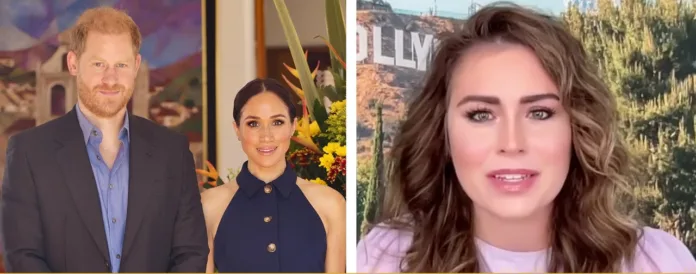The Sussex high-profile tour of Colombia, marked by glossy images and vague statements, leaves many wondering about the trip’s true objectives
Prince Harry and Meghan Markle’s recent four-day tour of Colombia has sparked intrigue and scepticism. The trip, filled with picturesque images and enthusiastic local receptions, has left many questioning the underlying purpose and outcomes of the visit.
The Sussexes’ tour featured appearances at various events, including a drumming school in Cartagena and an Afro-Descendant Women and Power event in Cali. Despite the vibrant photos and warm welcomes, the precise motivations for choosing Colombia and the tangible impact of their visit remain unclear.
Statements from the couple’s team emphasized themes of “uplifting communities” and “showcasing the nation’s heritage,” but these broad claims have done little to clarify the trip’s goals. The media coverage was limited, with only a single journalist from Harper’s Bazaar given access to report on the events. This selective approach to media coverage has left many questions unanswered and fueled speculation about the real purpose of the tour.
The Sussexes, now independent from royal duties and funding, have the freedom to organize such tours as they see fit. However, their choice to limit media access and control the narrative raises questions about their intentions. The lack of independent scrutiny means that the full story behind their Colombian visit remains obscured.
The tour included a focus on issues like online safety and interactions with local communities, but it was the underlying motivations and benefits that attracted the most scrutiny. While Prince Harry’s remarks on social media at an online safety summit resonated with some, there was no clear, consistent message or overarching theme to the tour.
Local reactions were mixed. In San Basilio de Palenque, a historic town founded by escaped slaves, there was curiosity about the couple’s presence. Some locals questioned the relevance of the visit, considering the more pressing issues facing Colombia. One journalist noted that the country’s immediate concerns were far removed from the high-profile visit.
The visit’s political dimensions are also notable. Vice-President Francia Marquez, who orchestrated the trip, saw the Sussexes as symbols of resistance and rebellion, aligning with her own public image. However, this move was criticized by opponents, who saw it as a distraction from pressing domestic issues and a showcase of Marquez’s own political aspirations.
Additionally, there were expectations that the couple might address historical and cultural topics related to their heritage and Colombia’s history of slavery. Despite these anticipations, neither Harry nor Meghan made any direct references to these issues, opting instead to focus on experiencing and learning from the local culture.
The Sussexes’ visit to Colombia, while visually captivating, has left many questions unanswered. As they return to California, the knowledge gained from this tour may shape their future projects, but the precise impact and intentions behind the trip remain speculative.
Analysis:
Political:
Prince Harry and Meghan Markle’s tour of Colombia, orchestrated in part by Vice-President Francia Marquez, intersects with political agendas both locally and globally. Marquez’s motivation to bring high-profile celebrities to Colombia aligns with her efforts to gain international attention and bolster her political standing. However, critics argue that this focus on celebrity-driven events detracts from addressing more urgent domestic issues. The Sussexes’ visit reflects broader trends of using high-profile endorsements to influence political and social narratives.
Social:
Socially, the visit highlights the tension between celebrity influence and local priorities. While the Sussexes’ presence generated excitement and positive imagery, there was a noticeable disconnect between the glamorous portrayal and the immediate needs of the Colombian population. The limited media coverage and lack of independent scrutiny contribute to a narrative that may not fully reflect local perspectives or the actual impact of the visit.
Racial:
Racially, the visit touches on themes of cultural representation and heritage. The absence of direct references to Colombia’s historical issues of slavery and the couple’s personal heritage, despite expectations, suggests a missed opportunity to engage with these significant topics. The visit also intersects with discussions about race and representation, particularly through the lens of Vice-President Marquez’s role and the broader context of addressing historical injustices.
Gender:
Gender dynamics are evident in the coverage and reception of Meghan Markle’s participation in the tour. Her role as a prominent female figure in international advocacy contrasts with local perceptions and the broader expectations placed on her and Harry. The focus on Meghan’s speeches and public appearances underscores the gendered aspects of public scrutiny and expectations for high-profile women in international contexts.
Economical:
Economically, the Sussexes’ visit reflects the commercialization of celebrity influence in international diplomacy. The strategic use of high-profile visits to enhance personal and political branding highlights the economic aspects of such engagements. The selective media access and controlled narrative suggest a calculated approach to leveraging their public image for specific goals, potentially shaping future economic and philanthropic endeavours.
